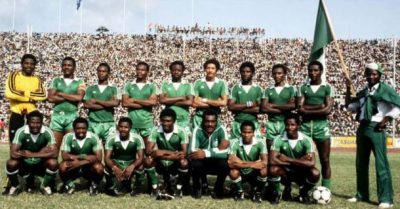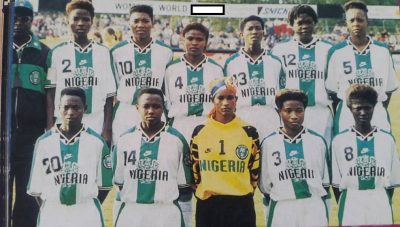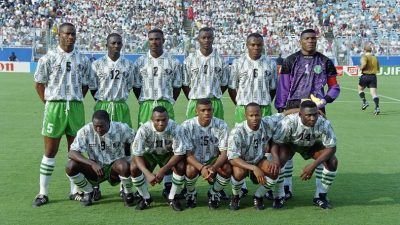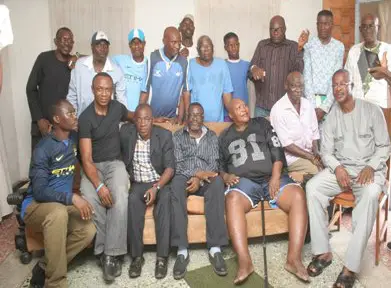By Steve Austin Nwabueze
This article is the second and concluding part of a two-part paper articulating the legal issues arising from the plight of ex- Nigerian footballers some of whom have been known to battle one ailment or the other from their playing days.
The latent injury argument
Whilst latent injuries suffered by footballers are not obvious to the ordinary observer, the courts in most common law jurisdictions, have held that the doctors who fail to identify those injuries before certifying the players ‘fit to play’ are liable for medical negligence where the latent injuries, in the course of play, results in some form of patent, permanent disability which would have ordinarily been preventable if the doctors had been more meticulous. This liability will vicariously rub off on their masters/employers/the organisation they work for. In Pinson v State of Tennesse, an American case, at trial, the school’s trainer was found negligent for failing to communicate Pinson’s neurological signs and symptoms to the emergency room and treating physician. Damages of $300,000 were assessed against the school trainer and the school. What this means is that where there is a latent injury that the doctors or Football Federation ought to have known about or made known to the player, failure to make such fact known will attract liability when damage results.
Vicarious liability
In Hamed v Mills & Tottenham Hotspur Football Club, the court held the defendant club’s doctor liable for allowing and recommending the fitness of the claimant to play when he knew that he had some health challenges, albeit, not obvious, that could lead to serious damage. Tottenham Hotspur FC was also held to be vicariously liable for the damage caused by its doctor. The court held that
‘‘…a reasonably competent doctor …… would have known there was a small chance of some other pathology which could not be excluded. The conclusion that the club doctor arrived at, and noted in the records, was one that no reasonably competent doctor would have arrived at.’’
The ambit of vicarious liability has now been widened by the English Supreme Court in the case of AM Mohamud v WM Morison’s Supermarket Ltd. This case widened the scope of vicarious liability which could apply to football clubs and other employers employing athletes.
Mr. Mohamud was assaulted by a petrol garage assistant employed by the supermarket chain, Morrisons. Mr. Mohamud had entered the petrol station, in Birmingham, and had asked if the assistant could print some images for him. The assistant replied to Mr. Mohamud with foul and abusive language to which Mr. Mohamud protested. The assistant asked Mr. Mohamud to leave but when Mr. Mohamud returned to his car, the assistant followed him. He opened the passenger door to Mr. Mohamud’s vehicle and punched him. Mr. Mohamud got out of the car and the assistant punched him further, to which Mr. Mohamud fell to the ground. Mr. Mohamud was severely assaulted despite the assistant’s supervisor pleading for him to stop.
Also Read – Ex-Nigerian Footballers: The Unending Debate of Neglect And Role of The Law (Part 1)
Mr. Mohamud brought a claim against the assistant’s employer, WM Morrison, on the basis that they were liable for their employee’s actions. The case had failed at first instance and at the Court of Appeal on the basis that there was not a sufficiently close connection between what he was employed to do and the assault on Mr. Mohamud. Mr. Mohamud appealed to the Supreme Court. The Supreme Court held that the supermarket chain was liable for their employee’s action. They considered the current position for vicarious liability and the close connection test which was whether the act was so closely connected to the course of his duties, under his employment, to hold the employer liable. The Supreme Court advised that it saw no need to change this test but in practice, the scope for vicarious liability has been extended. The Court stated that an assistant’s role was to attend to customers at the petrol station and respond to any enquiries. The assistant’s reaction was unjustifiable, but the Court held that it was within the “field of activities” assigned to him. There was therefore no break in the chain as the attack followed on from the assistant’s interaction with Mr. Mohamud. The fact that the act amounted to gross misconduct was irrelevant and the Court stated that the employee did not “metaphorically take off his uniform” when carrying out the attack. The motive for the attack was irrelevant.

This case has significant implications for employers employing athletes. Effectively an employer can be held liable for any act where there is any link to an employee carrying out his “field of activities” regardless of the motive for that act – whether it be criminal or not. This case arguably removes the “frolic of his own” concept, a defence widely used in vicarious liability cases.
The tests for clinical medical negligence
The only known tests for the proof of clinical negligence are in Scotland and England. In Scotland, the test for clinical negligence is taken from an old case from the 1950s, called Hunter v Hanley (1955). The test states that for a claimant to prove negligence, he must show (1) that there is a usual and normal practice; (2) that practice was not followed and; (3) the course adopted was one that no other professional, in that field, would have adopted had he been acting with ordinary care.
In England, the test for clinical negligence is slightly different and comes from the case of Bolam v Friern Hospital Management Committee (1957). It states that the claimant must show that the practitioner has not acted in accordance with a practice accepted as proper by a responsible body of medical men skilled in that particular area.
Regardless of whether the negligence lies in Scotland or England, the claimant bears a heavy burden of proof in order to win his case. However, even if the claimant can prove negligence, this is still not enough. The claimant must also prove causation.
As these principles are fleshed out by case law around the world, the decisions suggest that the determination of n employer’s (in this case, the NFF and Ministry of Sports) duty in a given circumstance requires a fact-intensive analysis. In fact, the club or the national team’s standard of care owed to the athlete is often the most difficult element for the plaintiff to establish. The Nebraska Supreme Court in Cerny’s case held that the school district and coaches were not liable. The issue before the Nebraska Supreme Court was the proper standard of care that the coaches and school owed the plaintiff regarding his head injuries and continued participation on the team. The court noted that the analysis of negligence in a sports setting is highly dependent on the particular facts and circumstances. While the Nebraska Supreme Court found that the Coaches had the necessary qualifications and discharged their duty to the plaintiff, the evidential hurdle before a prospective claimant in such cases was further highlighted by the decision.
As stated earlier, much depends on the peculiar facts and circumstances of the case; if the victim/claimant can establish that the Medical Personnel assigned by the NFF and the Federal Government lacked the necessary qualifications and/or applied a standard below the approved medical standard in the treatment, diagnosis and handling of the Nigerian footballers, a strong case of negligence can be established.
The Pitfalls in Successfully Establishing a Case of Clinical Negligence
As in every claim in law, there are successful defences which a defendant to a claim of clinical negligence can raise to robustly challenge such claim. As I have already highlighted in the first part of this paper, the success rate of cases of clinical negligence requires a fact-intensive analysis and the expert evidence available to the court. Most of the decided cases on the point have been won on the heels of robust medical/expert evidence. On the other hand, in some of the cases where a prima facie case of clinical negligence existed, the claims ultimately failed for lack of evidence. However, below are some of the defences that could negatively impact on a successful claim of clinical medical negligence. Noteworthy is the fact that these defences are not exhaustive and much depends on the jurisdiction where the case is fought. However, the common defences are (i) Assumption of risk (ii) limitation of action and (iii) the tripod of duty of care, breach of duty and damages required to establish negligence which were extensively analysed in part 1 of this paper.
A. Assumption of risk
The Restatement of Torts defines the doctrine of assumption of risk:
“A plaintiff who voluntarily assumes a risk of harm arising from the negligent or reckless conduct of the defendant cannot recover for such harm.”
The eminent editors of the fourth edition of Clark and Lindsell on Torts at paragraph 107 opine that the maxim represents “the self-evident axiom that one who consents to injury cannot be heard to complain of it thereafter.” Thus, a person who makes an agreement with another either expressly, or by necessary implication, to run the risk of injury, caused by that other cannot recover damages caused to him by any risk he agreed to run. As a defence, it must be specifically pleaded.

Now, in the Anglo-Nigerian Law of Tort, the maxim volenti non fit injuria [which must not be confused with the maxim scienti non fit injuria], also, called “assumption of risk,” or “voluntary assumption of risk,” operates as a defence to a tort.
Assumption of risk can be express, as where the plaintiff gives his express consent to relieve the defendant of an obligation to exercise care for her protection and agrees to take her chances as to injury from a known or possible risk.
Assumption of risk can also be implied, as where the plaintiff voluntarily enters some relation with the defendant which he knows to involve the risk and is therefore regarded as tacitly or impliedly agreeing to relieve the defendant of responsibility, and to take her own chances.
The “primary” sense of implied assumption of risk is that of a plaintiff who voluntarily enters a relationship with the defendant, knowing of risk involved, and who behaves reasonably in assuming it. The “secondary” sense of implied assumption of risk describes a plaintiff’s voluntary and unreasonable encountering of risk presented by a defendant’s negligence. Thus, a club or National Association faced with a player’s negligence action will often assert that the plaintiff impliedly assumed the risks inherent in the sport (football).
Thus, in considering whether a plaintiff impliedly assumed the risk, the courts may make a largely subjective inquiry or a largely objective one. In Foronda and Balthazor, the courts analyzed the plaintiff’s implied assumption of risk based largely on an objective standard arising from the obvious risks of the sports involved, boxing which is obviously an inherently risky sport. This has over time, proven to be a convenient defence for defendants in matters of this nature. Regardless of this hurdle however, the court would determine on the preponderance of evidence which one of the parties established his case better. A straightforward claim of negligence containing all the ingredients and showing the causal link between the injury and the defendant’s action can robustly meet any defence of voluntary assumption of risk.
Football as a contact sport carries a notional understanding among all parties involved that there is an inherent risk of sustaining injuries which could be fatal. A defender jumping up to head out a dangerously swinging cross inside his 18-yard area and getting concussed from the resulting clash of heads from an on-rushing attacking player from the opposition is deemed to know exactly what he is getting into. The easier choice of course would be to shy away from the challenge and suffer the ignominious fate of conceding an avoidable goal to the opposition. The fans’ backlash for the culpable player is better imagined.
B. Limitation of Action
Limitation is an assignment of a period of time within which certain actions may be commenced in Court by statutes. The Limitation Law is substantive in nature and it states the time frame within which an action must be brought. There are many factors responsible for the limitation placed on certain actions by statute at the expiration of a certain length of time. The principle that there must be an end to litigation is one of the factors responsible for the statute of limitation. Another factor is to protect the defendant from perpetual liability and to avoid the injustice of defendants’ inability to produce witnesses and/or vital documents which could have been lost one way or another after an unreasonably long delay by the plaintiff to make his claim.

There are various limitation periods for different subject matter claims. Actions based on simple contracts, recovery of debts and arrears of interest, tortuous malfeasance which includes damages for negligence or breach of a duty of care, account stated, etc, must be commenced within a period of six (6) years of the occurrence of the injury, loss or damage.
As there is usually an exception to most general rules, there are also exceptions to the limitation periods for commencing a lawsuit to protect a legal right or to obtain a legal relief or redress.
The most common exemption to the limitation period requirement is that it will only commence, in cases of fraud, mistake or disabilities (like infancy and unsoundness of the mind), from when the Claimant became aware of the injury or of the existence to the legal right or relief; or in the case of a disability, from when the disability ceases to exist.
Also Read – Siasia And Integrity of Football: Application of Deterrence Theory of Criminal Jurisprudence Taken Too Far?
Secondly, where there has been a continuance of the damage, a fresh cause of action arises from time to time, as often as damage is caused”.
A continuing damage or injury is not merely continuance of the injurious effects of a legal injury but the continuance of the legal injury itself. It is the continuance of the act which caused the damage. The law is that, generally, where the injury complained of is a continuing one, time does not begin to run for the purpose of application of a limitation law until the cessation of the event leading to the cause of action. In other words, “Continuation of injury” means the continuation of the act which caused the injury.
Applying the foregoing to the instant discourse, the exact time when the injury was sustained must be established to enable the court to determine when the cause of action accrued. At any rate, these are just few of the numerous defences or pitfalls to this case. However, a lot would depend on the medical testimony of the expert(s).
Reflective Comments
From the foregoing, it is conceded that it will be a herculean task to establish a breach of duty of care as well as a causal link between the alleged breach and the damages suffered. A legal action remains a viable option so long as the victim is able to address the afore-mentioned pitfalls. Even though there has been no reported case of an ex international suing the Federal Government, it would be interesting to have a test case.
Unfortunately, given the timing of this awareness and the time lag between the sustenance of these injuries and the commencement of any action, no court in Nigeria would be inclined to entertain any claims of this nature. Some analysts have taken the view that since the ex-internationals (Nigerian footballers) have been paid their due entitlements during their playing days, there was no legal nor moral obligation on the government’s part to take care of their medical bills post retirement. This position however seems to have neglected the fact that some of these injuries are latent injuries which manifest years after. From the analysis above even if the retired athletes/ Nigerian footballers fail to get the much-needed redress through litigation, a policy framework that would drive awareness in this area is much needed. The medical standard established by FIFA, which is the global benchmark, must not only be complied with by the Football Federation, all the clubs in the Nigerian Professional Football League must also be made to comply with the medical standard.

With this in mind, an elaborate audit of the prevailing medical records of the ex-internationals and current footballers in the national team set up should be conducted with a view to ascertaining their injury records and causal link with the muscular atrophy suffered by the ex- Nigerian footballers after their playing days in order to stem the tide of this malaise.
Disclaimer: The present article reflects only some personal views and general remarks drawn from a legal analysis of the plight of ex Nigerian footballers and should not be regarded as a legal advice or bind the author in any way. The author confirms he has no professional involvement in this particular matter whether past or present.
Steve Austin Nwabueze is a Senior Associate in Perchstone and Graeys LP and the team lead of the Dispute resolution and Sports law Group of the firm.
Email- stevenwabueze@perchstoneandgraeys.com.
Telephone-08032336584, 08138251803
References
i. Cited as C.A. No. 02A01-9409-BC-00210 (Tenn. App. 1995).
ii. (2016) UKSC 11
iii. Cerny v. Cedar Bluffs Junior/Senior Public School – No. S-99-1227.
v. See, W. V. H. Rogers, Winfield and Jolowicz, Tort, (London: Sweet and Maxwell, 2006) [Seventeenth edition] paragraph 25-11, page 1071; paragraph 25.2, page 1058; D. Howarth “General Defences,” in A. Grubb (ed), Butterworths’ Common Law series, The Law of Tort (London: LexisNexis, 2002), paragraph 5. 52, page 170; Phiilip Obiora v. Paul Osele [1989] 1 NWLR (Pt. 97) 179, 299-300; Egbe v. Adefarasin [1987] 1 NWLR (Pt. 47) 1; Ariori and Ors v. Elemo and Ors [1983] 1 SC 13, 26; Koya v. UBA Ltd [1997] 1 NWLR (Pt. 481) 251, 268.
vi. Due to its effectiveness in “obstructing the path of plaintiffs who had been injured at work,” D. Howarth “General Defences” (supra), Diplock LJ, once noted that the maxim “in the absence of express contract, has no application to negligence simpliciter where the duty of care is based solely on proximity or ‘neighbourship’ in the Atkinian sense,” Wooldridge v. Summer [1963] 2 QB 43, 69; [1962] 2 All ER 978, 990; see, however, Imperial Chemical Industries Ltd v. Shatwell [1965] AC 656; [1964] 2 All ER 999 [per Lord Pearce]; Nettleship v. Weston [1971] 2 QB 691; [1971] 3 All ER 581 [per Lord Denning] and, more recently, Reeves v. Metropolitan Ploce Comr [2000] 1 AC 360; [1999] 3 All ER 897 [per Lord Hobhouse].”
vii. See Chigbu v. Tonimas Nig. Ltd. (2006) 9 NWLR Pt. 984 Pg. 189, Mbu v. Stanbic I.B.T.C. Bank Plc. (2016) 12 NWLR Pt. 1527 Pg. 397.” Per OGUNWUMIJU, J.C.A. (Pp. 8-9, Paras. F-D)
viii. See Abiodun v. Att. Gen. Fed (2007) 15 NWLR Pt. 1057 Pg. 359. Also, where the continuance of damage is such that gives rise to a fresh cause of action every time it occurs, limitation law will not apply to bar action on the fresh cause of action. See SPDC Nig. Ltd v. Amadi (2010) 13 NWLR Pt. 1210 Pg. 82, Olaosebikan v. Williams (1996) 5 NWLR Pt. 449 Pg. 437






